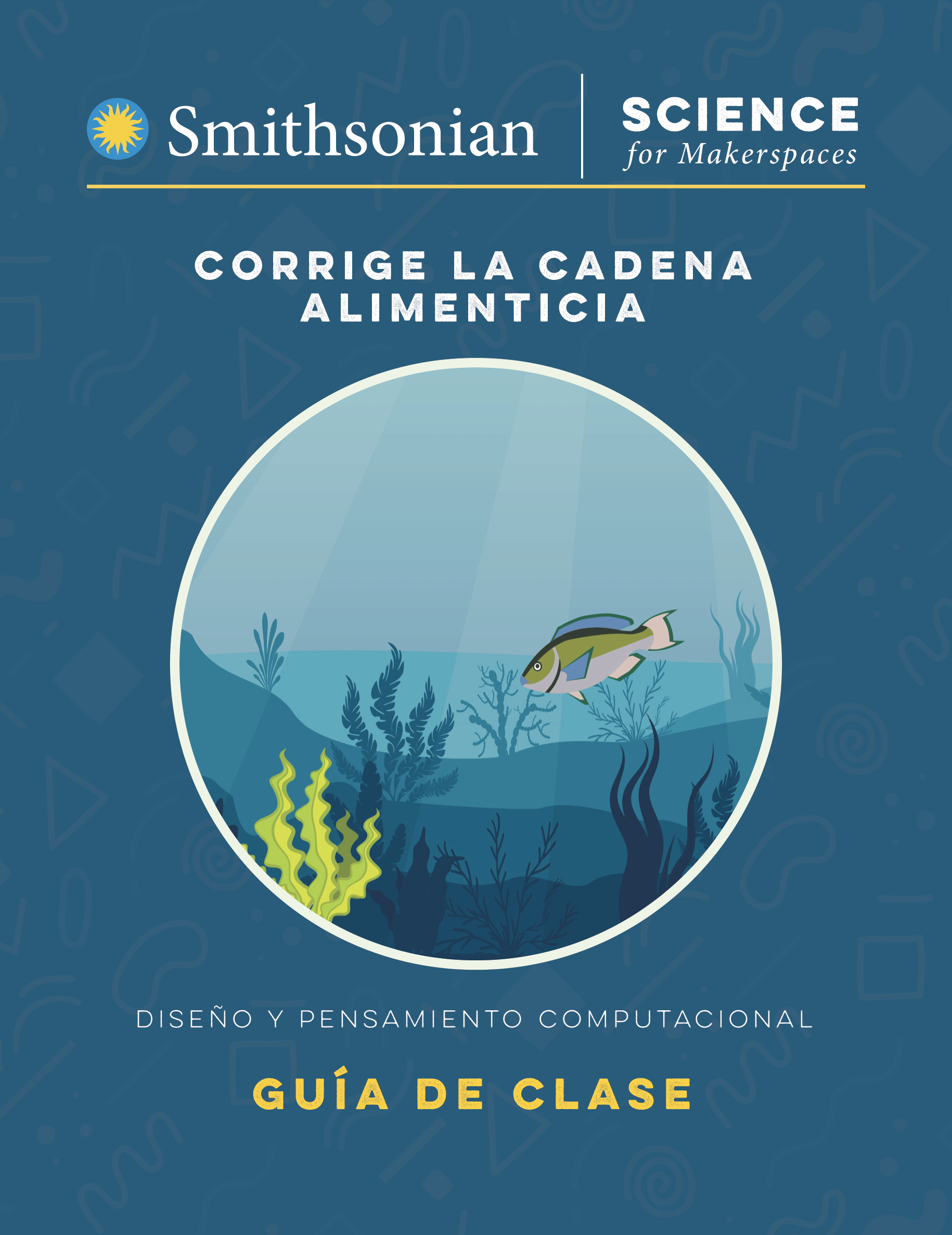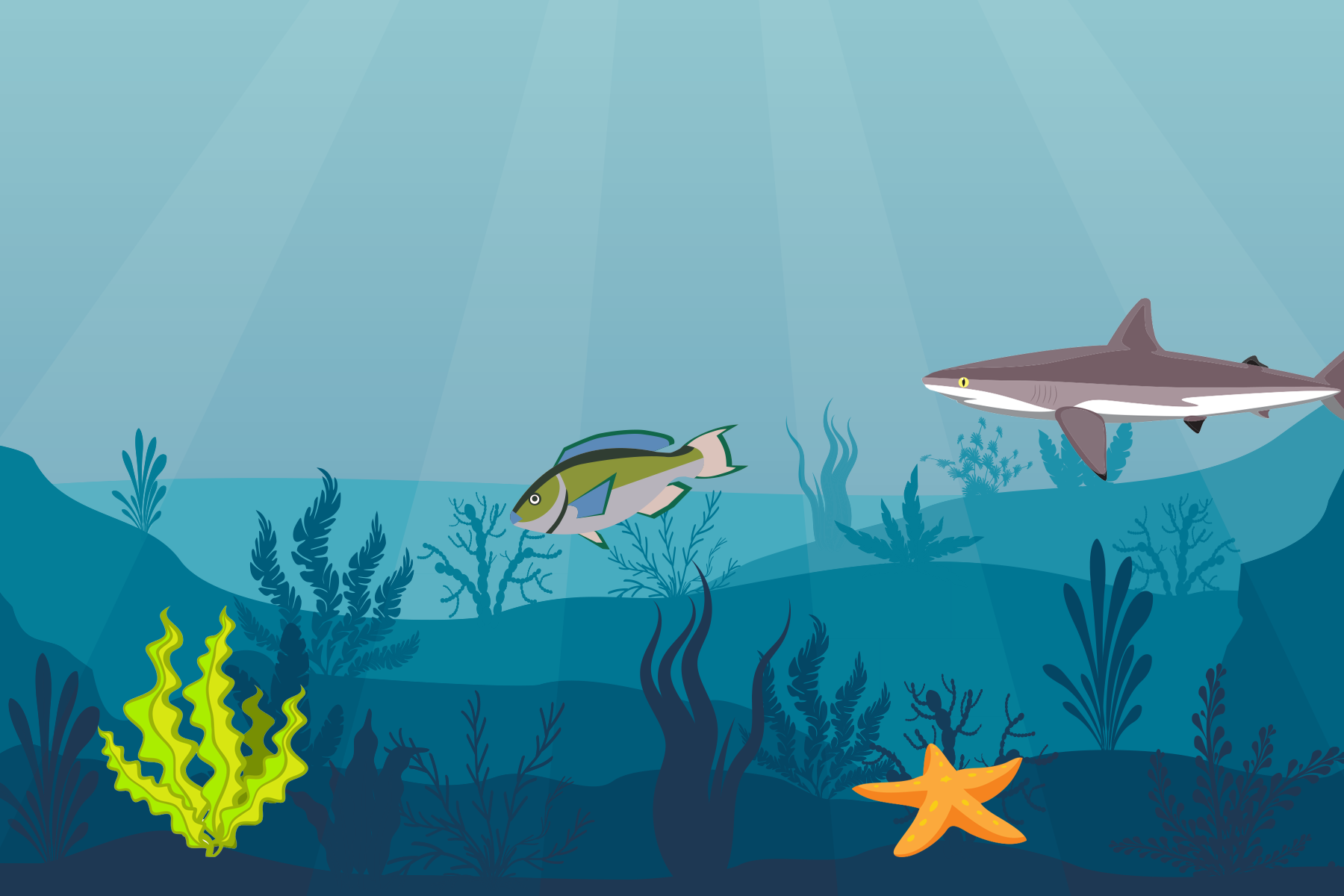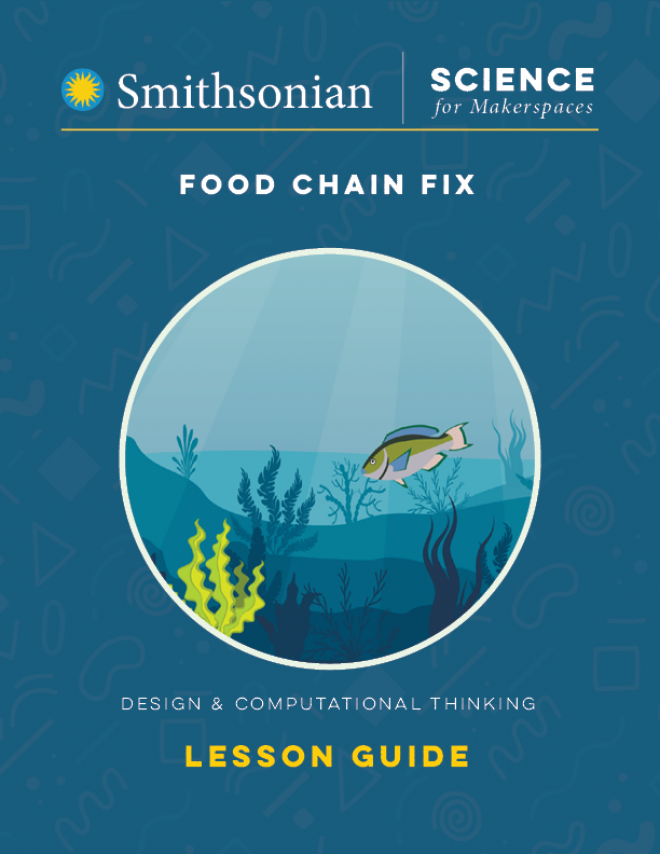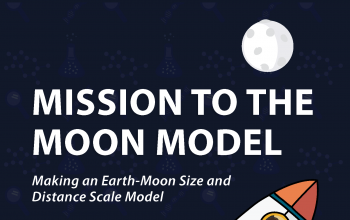Food Chain Fix
Food Chain Fix
In this lesson, students will explore the roles of organisms in a food chain while demonstrating their knowledge through designing a model in a game-like simulation. This food chain model will be developed to represent an example food chain and the interactions of food chain organisms as they exist in nature. This model will be generated in the free programming language and online community called Scratch™. Students will use computational thinking through recognizing the common roles and patterns found within food chains and generating a new food chain model based from their custom design.
Class periods: 1-2
Preparation time: 40 minutes
Vocabulary Words: consumer, decomposer, food chain, producer, secondary consumer
Downloads:
Food Chain Fix Lesson with Student Resources

Download Food Chain Fix in Spanish
Spanish translations for the Smithsonian Science for Makerspaces challenges are made possible by a grant from the Smithsonian Women’s Committee.
ISTE
4a Students know and use a deliberate design process for generating ideas, testing theories, creating innovative artifacts, or solving authentic problems.
5a Students formulate problem definitions suited for technology-assisted methods such as data analysis, abstract models, and algorithmic thinking in exploring and finding solutions.
NGSS
Student Objectives:
- Develop a digital model that demonstrates how energy moves through the organisms of a food chain.
- Use system models to represent the common patterns of food chains
Disciplinary Core Ideas:
- Organisms are related in food webs in which some animals eat plants for food and other animals eat the animals that eat plants. (5-LS2.A)
- Energy released from food was once energy from the Sun that was captured by plants. (5-PS3-1)
Science and Engineering Practices
- Developing and using models
- Organize simple data sets that suggest relationships
Crosscutting Concepts
- Patterns
- Cause and effect
- Systems and system models
The teacher will share the following passage and images with students:
Think of some animals and plants that live in the ocean. Look at this picture of some animals and plants that live in a special part of the ocean called a coral reef. All of these organisms depend on each other for food and energy. Each organism in this picture gets its food from a different thing. Can you guess how each organism gets its food? The green plant-like organism is called algae. Algae is a producer, meaning that it gets its energy from the Sun. Can you think of any other producers? Do you notice the fish trying to eat the algae? That is a parrot fish. The parrot fish is a consumer, which means that it gets its energy from eating producers like algae. Uh-oh! Do you see the reef shark chasing the parrot fish? A reef shark is a secondary consumer and gets its energy from eating other animals like the parrot fish.
The sea star is a decomposer, which means it gets its energy from eating dead organisms. The decomposer helps the coral reef because it recycles the dead organisms into helpful nutrients for the environment. Animals like the sea star can get energy from eating other organisms like clams and oysters, too. This means that the sea star can be both a decomposer and a secondary consumer. In this
one environment we saw how the energy from the Sun went to a producer, then a consumer, then secondary consumer, and finally the decomposer. This relationship of how energy moves from one organism to another is called a food chain.

Photo credits: Photoplotnikov/iStock/Getty Images Plus,neyro2008/iStock/Getty Images Plus, Svetlana Orusova/neyro2008/iStock/Getty, Bullet_Chained/iStock/Getty Images Plus, terdpong pangwong/iStock/Getty Images Plus
Click here to open image in a new window
Where do animals get their traits? Most traits are passed from parents to their offspring, or babies. If the trait is useful it will help an animal survive and give it a better chance to reproduce. But a trait that is not helpful in the environment makes it harder for the animal to survive and reproduce. Over many, many years there will be more animals with the helpful trait and fewer animals with the unhelpful trait. The environment and traits of the animal must be a good match.
Discussion Questions:
- Why is the Sun an important part of the food chain?
- The sea star can have different roles in a food chain. Can you think of other animals that also play different roles in a food chain? For example, can you think of an animal that may eat plants and other animals?
Smithsonian Connections:
Learn more about food chains in the ocean at: https://ocean.si.edu/
For Teachers
- Navigate to the Scratch™ web editor for each student group:
https://scratch.mit.edu/projects/editor/
- Download the two Scratch™ games for each student group:
-Mixed-up food chain project file (FoodChain_MixedUp.sb3)
-Correct food chain project file (FoodChain_Fixed.sb3) - For detailed directions on how to use Scratch™ including how to load a project file use the Scratch Q&A sheet.
For Students
- Load the file FoodChain_MixedUp.sb3. This is the project with an incorrect and mixed-up food chain. Students will need to swap the food chain roles to fix the food chain.

- Press the green flag button to start the game.

- The mixed-up food chain is broken into four stages. There is a text box at the beginning of each stage:
1) Producer
2) Primary Consumer
3) Secondary Consumer
4) Decomposer - Have the students look for the mistakes in each stage, highlighting that the organisms are mixed up and need to be swapped into their correct food chain role. To fix the food chain, students will need to switch the organism’s ‘costumes’ within the Scratch™ interface. The Scratch ‘Costumes tab’ gives student’s the ability to modify the appearance of a game object. Students can use the Changing a Costume worksheet to learn the step by step process of changing a game object’s appearance. Students can also use the Food Chain Examples worksheet to help them complete this task.
- If students are unsure of how to make correct the mixed up food chain correct they can use the Food Chain Examples worksheet.
- Learn more about how to switch costumes in the Scratch™ interface using the Changing Costumes worksheet.
- Student groups will demonstrate their own fixed food chain. They can also compare their simulation to the Correct food chain project file by uploading FoodChain_Fixed.sb3.
Stage 1 Example: Change the parrot fish costume into the algae costume. Use Changing a Costume worksheet for step-
by-step instructions.

Not a correct producer.

Changed to the correct producer.

- Using the Fixed food chain project file and the Food Chain Examples sheet, students will now use new organisms to create a totally new food chain in a different ocean ecosystem and represent it in the food chain simulation. To do this, students will create new pictures of each organism using the Scratch™ interface. They can do this through the Scratch™ paint feature they should be used to or they can upload a new image file in the costumes tab. If you need additional instructions, review the Changing Costumes worksheet.
- Teacher tip: Each student can work on an individual food chain organism on a separate computer. They can then save the image file and import into the shared Scratch™ project.
- After changing the Scratch™ costumes to reflect a new food chain model, students will test out their new simulation by pressing the green flag button. As part of the test, tell students to look for any improvements they can make to make the organism models more realistic.
- Bring the class together. Have student groups demonstrate their new food chains to the class. Ask them to answer the following questions during their presentation:
Discussion Questions:
- What are the names of the organisms in your food chain?
- How is your food chain similar to the first one we did as a class? How is it different?
- How is the simulation different than real life?


